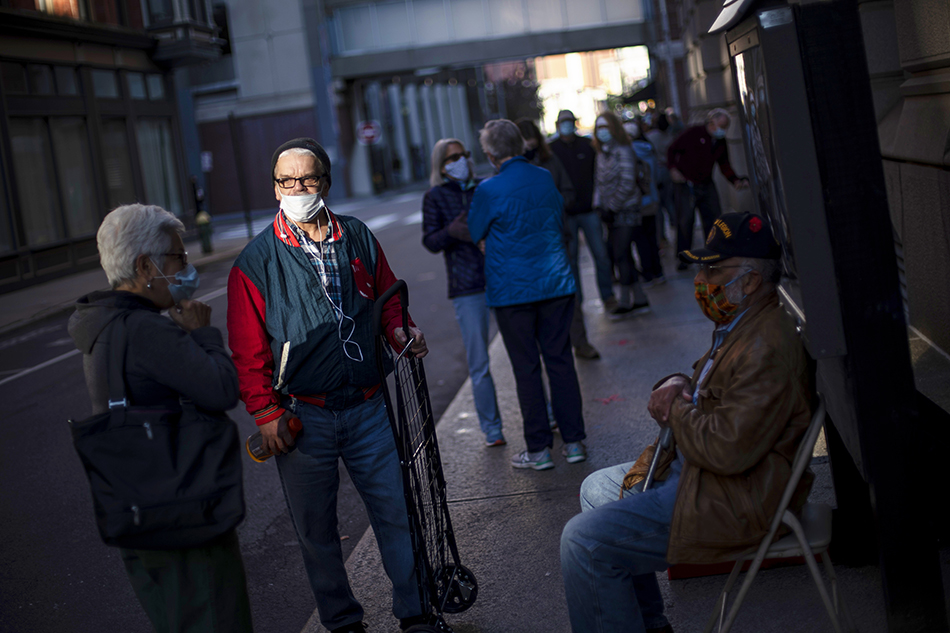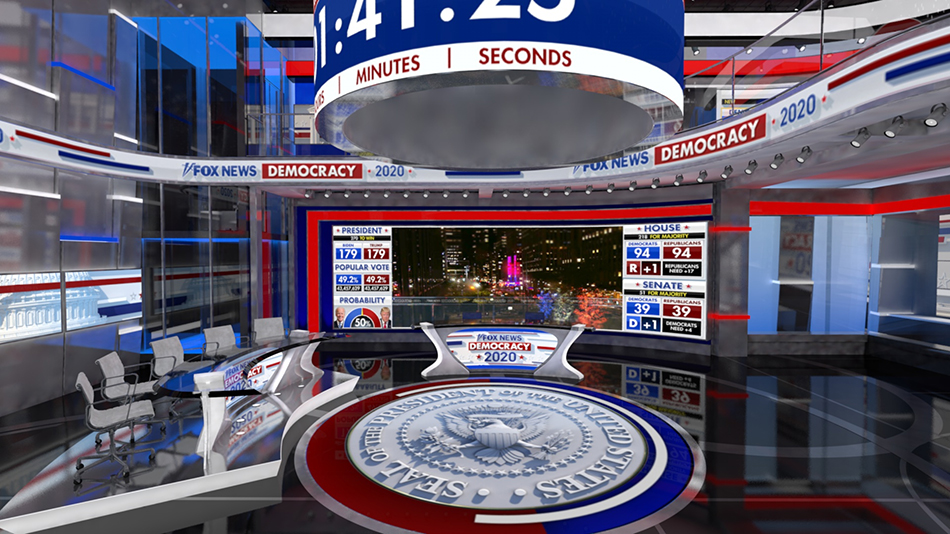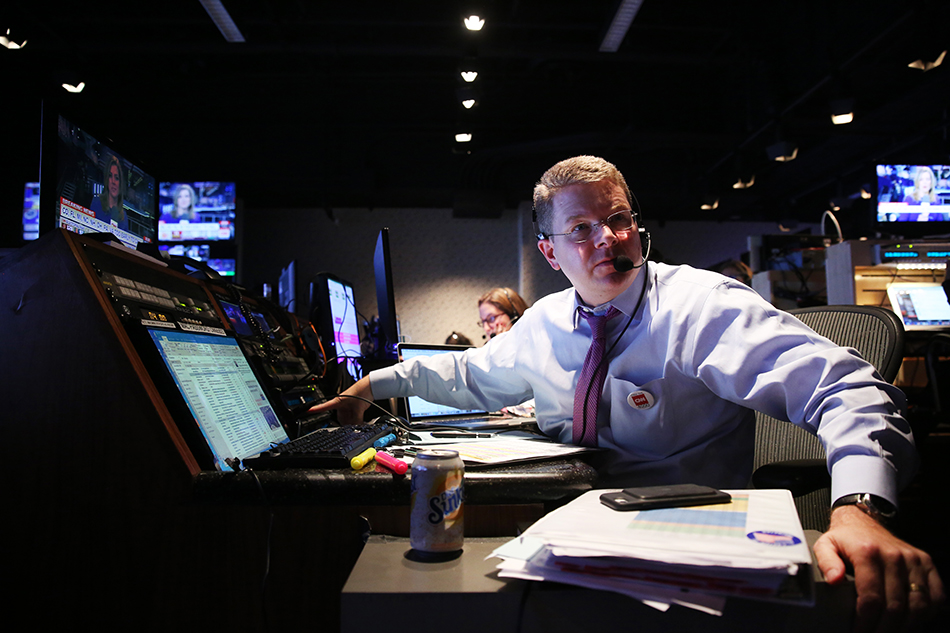Cover Story: The Longest Night
News organizations gear up for major challenges and changes in election-night coverage, the Super Bowl of the news business

Much like everything else that has transpired in 2020, election-night coverage promises to test news organizations as they have never been tested before.
“I’ve been part of election teams since the 1980s,” said David Bohrman, executive producer of CBS News’s 2020 election-night coverage. “I’ve run election coverage at CNN and NBC, and now here at CBS, and this is the most complicated election I’ve ever been part of.”
RELATED: Streaming to the White House
Marc Burstein, senior executive producer of ABC News Special Events, agreed, citing the difficulties of producing a major election-night special in the middle of a major pandemic: “We are having to prepare for anything and everything. It could be the longest night or it may not be. No one knows and we have to prepare for every possible contingency.” (NBC News, the other Big Three broadcast network news arm, did not provide executives to be interviewed.)

Or, as PBS NewsHour executive producer Sara Just observed: “It’s like trying to tie your shoes while riding a bicycle. We are confident we have a good plan for keeping everyone safe, but it is challenging. This is going to be a night like none other.”
Much of this reflects a 2020 news cycle that has produced a slew of once-in-a-lifetime stories and tragedies. “I’ve been at CNN for almost 30 years and this is the most intense news environment I’ve ever seen,” Sam Feist, senior VP and Washington bureau chief at CNN, said during B+C’s News Technology Summit last month. “We are covering an election, maybe the most anticipated election in our lifetime, along with a pandemic and a national reckoning over race.”
RELATED: The New Math of Election Coverage
The smarter way to stay on top of broadcasting and cable industry. Sign up below
“When we look back on 2020 we will think, ‘Wow, that was the most extraordinary news year ever,’ and we did it with an arm and a half tied behind our back,” Feist added.
These national calamities and controversies have also spiked viewer interest in the results and significantly raised the competitive stakes for news organizations.
“There are more eyes on this election than we’ve had in our lifetimes,” Cherie Grzech, VP of politics and the Washington bureau at Fox News, said.
The Most Unusual Election Night
The heightened scrutiny comes as news organizations are grappling with what might on Nov. 3 be the most unusual election night in television history.
Unlike other presidential elections, where networks covered voters casting ballots and reported the results the same day, early voting this year is hitting record levels. Mail-in voting is also expected to hit record levels, and many votes might not be counted until after Nov. 3. That, in turn, could delay results and make the process of reporting and calling races a much more complex and uncertain process. (See “The New Math of Election Coverage,” page 12.)

Technology and production plans have also been upended by a pandemic that has killed more than 220,000 people. In addition to having many people work from home, networks are using more studios and control rooms to spread out employees and are revising coverage plans by recruiting additional legal experts to explain potential voting irregularities and rethinking how to deploy journalists. Many typical election-night gatherings are likely to be canceled and travel restrictions will make it more difficult to get boots on the ground.
One thing that hasn’t changed is election night’s importance. All the major commercial TV news organizations are investing millions of dollars in new sets and technology to stand out from the competition and attract new viewers.

“Election night, for us and for all the news networks, is our Super Bowl,” Fox News senior VP of news and politics Alan Komissaroff said. “It is our biggest night and we are determined to put our best foot forward. There isn’t a nook and cranny of the building that we are not using. We’ll be using every piece of technology we have been using in the past and a few new ones as well.”
As in earlier years, many networks will broadcast their coverage from new sets, studios or facilities that feature the glitziest graphics and massive, high-resolution, floor-to-ceiling walls and screens for data and results.
Coverage will include big touch screens where correspondents and anchors take deep dives into results and augmented reality systems. Some networks, such as Fox News, will even be debuting virtual reality systems.
The challenges facing news organizations this year may also improve the quality of coverage. For example, COVID-19 restrictions limiting in-studio guests will result in using a much wider array of sources and voices from remote locations, network executives said. “This has been kind of a breakthrough moment this year in terms of adding more people to the conversation,” Fox News’s Grzech said.
Another positive development is the rapid expansion of streaming services. Their growing availability means viewers will be able to easily access a much wider array of stories and coverage, both on digital media and on broadcast networks, where TV anchors can draw on the expertise of digital teams. (See “Streaming to the White House,” page 11.)
Election night, for us and for all the news networks, is our Super Bowl.
— Alan Komissaroff, Fox News
The difficulties of election coverage during the COVID-19 pandemic have also forced news organizations to integrate their operations more tightly with local stations, digital outlets and even radio organizations rather than fly reporters into key battleground states. This reporting from seasoned local journalists could provide national audiences with a better understanding of the results in those locales.
CBS, for one, will add extensive coverage to CBSN by streaming 10 local feeds, while Newsy will draw on coverage from parent company Scripps’s 60 TV stations.
“We have a team of four or five people who will be monitoring the local stations and we’ll be able to carry their feeds at key times,” said Matt Simon, supervising producer for PM content at Newsy, who is also overseeing election-night initiatives.
RELATED: Stations, Networks Eye Boom in Political Ad Spending
PBS NewsHour will also be drawing on the expertise of local reporters. “One of the great advantages of public broadcasting is that there are over 350 stations across the country that we work with,” Just said. “They know their communities best, and throughout our programming we will be turning to a lot of those reporters for their expertise.”
Built for Primetime
The complexity of predicting races and explaining voting trends is likely to make networks even more cautious and thoughtful when providing context or caveats in their reporting.
“Transparency is the watchword for us,” ABC’s Burstein said. He said coverage will explain what is known as well as what isn’t known, so viewers understand why certain information or vote totals aren’t available. “The decision desk [which calls races] is always careful and conservative, but this year we will be more conservative than ever.”
For its election-night coverage, ABC News will use a renovated studio that has been expanded to 5,500 square feet. It features 28 new video screens with about 35 million pixels, including a high-resolution video floor.

A variety of features that enables moving video walls and screens will provide more flexibility to tell the story from different angles. Enhanced capabilities for augmented reality and other graphics are also part of the mix.
“We will have tools to tell the story in ways we’ve never had before,” Zach Toback, VP of news and nonfiction production and studio operations at ABC News, said. “There is video everywhere, there is video on the ceilings, all across the walls, that creates a very immersive space. It is the largest renovation that we’ve done in any facility since the early 1980s.”
PBS NewsHour will be upping its production values with new LED walls that allow anchors and reporters to better display graphics and analyze results, VP of operations Matt Speiser said.
The decision desk is always careful and conservative, but this year we will be more conservative than ever.
— Marc Burstein, ABC News
Univision will show off a new set that improves its graphics capabilities and helps it follow COVID-19 restrictions. “We are trying to simulate as much as possible the expansiveness of the coverage we’ve had in the past and do an even better job this year,” said Lourdes Torres, senior VP of political coverage and special projects for the Spanish-language broadcaster. “We have a huge newsroom and the idea is to expand the set into the newsroom and basically have all the elements — video walls, touch screens — embedded in the newsroom.”
Due to COVID-19 restrictions, many Univision staffers have been working from home, with only about 25% of the typical newsroom staff on-site. For election night, though, Univision will be bringing more people into the building to supplement the remote workers.
To keep staff safe, Univision will place staff in additional control rooms and spaces to maintain social distancing, a strategy many other networks and news organizations are adopting. “We will have training, special cleaning teams, security to remind people about masks to keep people safe,” Torres said. “It is really a pretty elaborate plan.”

Safety Must Come First
Since the start of the pandemic, the Associated Press has decentralized video production operations and set up systems for people to work at home, AP deputy managing editor for visual and digital journalism Derl McCrudden said. But for the final days of election coverage, AP will be bringing a small video production crew back into the New York and London hubs.
That will allow AP to provide live election coverage for customers with the curated AP Direct channel and four other live channels that provide outlets with HD-quality video. “Many broadcasters air these feeds live around the world,” McCrudden said.
ABC will be spreading out staff over four control rooms and three studios. “We are being very careful with our COVID protocols,” Katie den Daas, executive producer at the streaming service ABC News Live, said. “We will have more control rooms than we’ve ever had, so we can be socially distant. We have added HEPA filters to our control rooms. Everyone wears a mask and some people in the control rooms will be getting the N95 masks of the sort used by medical professionals,” she said.
Said CBS’s Bohrman: “Everyone involved is being tested every day, everyone in the studio, everyone in the control room.” Network coverage will originate in a new high tech set at the ViacomCBS headquarters in Times Square, a first for the news division on election night. “The studio is zoned off to separate people and to make sure there is not any movement between the zones,” Bohrman said. “This is the biggest team effort in broadcast news, but we are finding ways to do it in a COVID-safe way.”

All of these efforts, executives said, will help to keep staff members safe as they report on the most unusual election of our lifetimes. Bohrman stressed the importance of overcoming obstacles and getting the story right — both for the networks and for the country.
“We and all the broadcast networks know that we need to help restore the faith in the electoral system,” he said. “It has been put under a lot of doubt by a lot of people and we need to be open and above board and clear as to the numbers to provide viewers with information they can trust.”
“This is our night,” den Daas at ABC News Live said. “That night might drag on for a while, but that’s OK, because this is what we do. This is why we got into journalism: To make sure we are here when Americans need someone to bring them the big story.”
